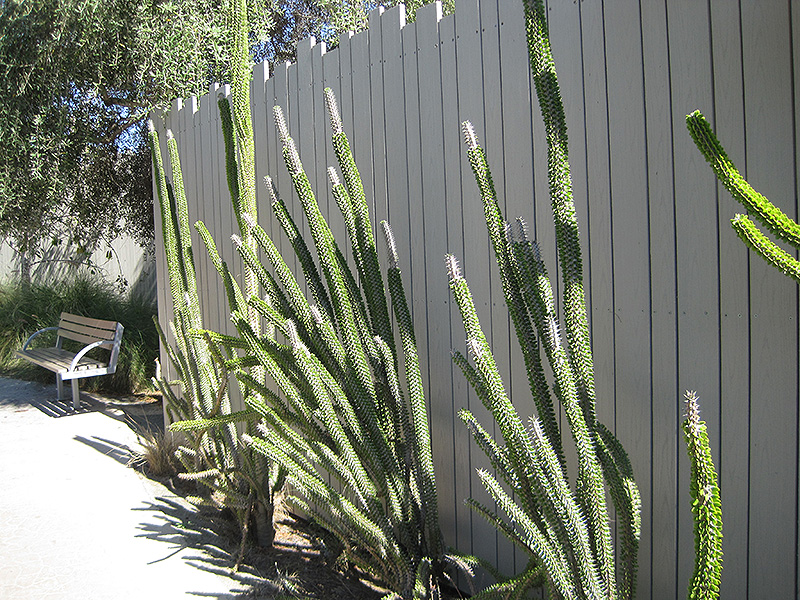Madagascan Ocotillo
Description
A striking shrub; vertically upright gray stems are woody and thorny, with bright green oval leaves in lines along the stems; blooms infrequently with clusters of white flowers; it really stands out in the garden or borders; also great for rock gardens
Landscape Attributes
Madagascan Ocotillo is a multi-stemmed deciduous shrub with a narrowly upright and columnar growth habit. Its strikingly bold and coarse texture can be very effective in a balanced landscape composition.
Madagascan Ocotillo is recommended for the following landscape applications;
Planting & Growing
Madagascan Ocotillo will grow to be about 20 feet tall at maturity, with a spread of 5 feet. It has a low canopy with a typical clearance of 1 foot from the ground, and is suitable for planting under power lines. It grows at a slow rate, and under ideal conditions can be expected to live for 40 years or more.
This shrub should only be grown in full sunlight. It prefers dry to average moisture levels with very well-drained soil, and will often die in standing water. It is considered to be drought-tolerant, and thus makes an ideal choice for xeriscaping or the moisture-conserving landscape. It is not particular as to soil pH, but grows best in sandy soils. It is highly tolerant of urban pollution and will even thrive in inner city environments. This species is not originally from North America. It can be propagated by cuttings.
Madagascan Ocotillo makes a fine choice for the outdoor landscape, but it is also well-suited for use in outdoor pots and containers. Its large size and upright habit of growth lend it for use as a solitary accent, or in a composition surrounded by smaller plants around the base and those that spill over the edges. It is even sizeable enough that it can be grown alone in a suitable container. Note that when grown in a container, it may not perform exactly as indicated on the tag - this is to be expected. Also note that when growing plants in outdoor containers and baskets, they may require more frequent waterings than they would in the yard or garden. Be aware that in our climate, this plant may be too tender to survive the winter if left outdoors in a container. Contact our experts for more information on how to protect it over the winter months.

